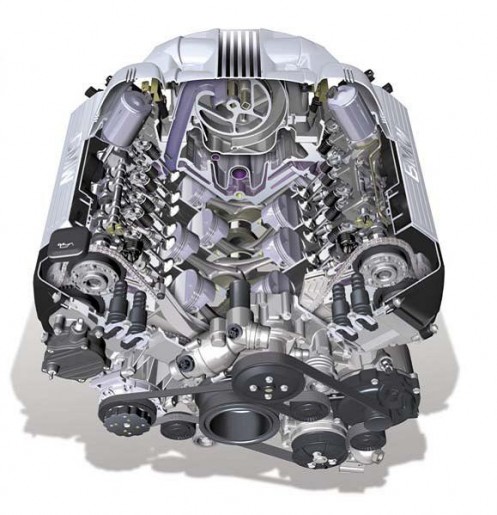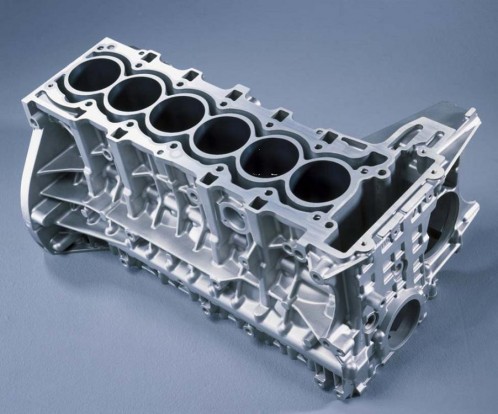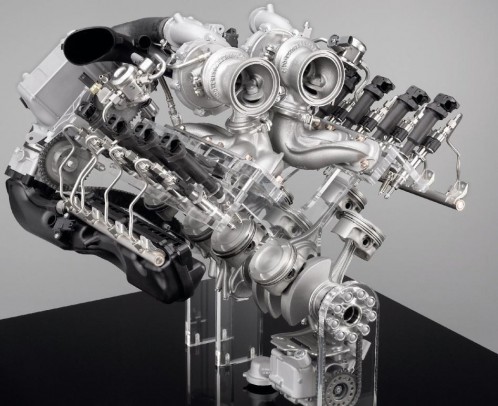BMW Engines: From M to N - Part 2
We are continuing our coverage on the BMW engines – Part 1 tin exist establish here – and today we are going to focus on the latest and what some might call, the best BMW engines to appointment, such as the accolade-winning N54 engine.
The "new generation" engines will exist the main focus of my engine technical articles. For two reasons; these are the engines I am personally most well versed in and spend the most time working on, secondly; they take the newest innovations which includes all of the same ones. The N52 (at present the N52K, it has received its kickoff update) is the new 2.5L or 3.0L 6cyl engine establish on all 1, 3 and five series, as well every bit the X3, and X5.
For terminology purposes all current production 3 series will be referred to as chassis code E9x. For the new 3 there are iv different designations to better describe which trunk style. Working at BMW, we refer to all cars past their chassis designation. E9x is a term for the three in general.
More than specifically the E90 is the sedan, the E91 is the touring (5 door/hatchback), the E92 is the coupe, and the E93is the hardtop convertible. Similarly the five and 6 are known equally E6x vehicles. The E60 is the 5 series sedan, the E61 the touring. The E63 is a half-dozen coupe and the E64 is a 6 convertible.
And since we've gone this far I might as well tell you the previous generation 7er is the E65, the E66 is the Li (long wheelbase). E70, the new X5 (the previous was the E53). E71 is an X6. E83 is an X3. E85 is a Z4 roadster, and E86 a Z4 coupe. I'thousand certain that's more than plenty for now.

Dorsum to the engines.
As I stated we accept the N52 for the electric current 6 cylinder. The N62 is the current V8 (besides has received first update, at present the N62TU), sized from three.6L all the mode to iv.8L. Mechanically both the N52 and N62 engines are tremendously more weight efficient than their predecessors, mainly through the use of materials and construction.
In item the N52 uses a magnesium aluminum alloy crankcase with an aluminum cylinder head and oil pan. The valve cover is magnesium. These are extremely light weight materials. I could become 1 most irksome structure techniques just basically everything is as lite as possible.
Continued
For example the camshafts are synthetic from a hydroforming process. The cams are not bandage. A hollow steel tube is used and each cam lobe is like a ring that can slide onto the shaft. Each lobe is placed in proper position and the assembly place in a die. The steel tube is and so pressurized with water at around 4000 bar (~58,000 psi). The bar expands and the lobes are now a printing fit onto the tube. These cams are exceptionally light weight and stiff.

There are 3 other major changes. An electric h2o pump is used to reduce parasitic loses by not beingness belt driven. This is too a much more precise fashion of controlling/monitoring engine temperatures more efficiently. Secondly, Valvetronic. This is a system that allows for variable lift on the intake valves. Third, a vacuum pump is needed due to the Valvetronic organization as it reduces manifold vacuum. The pump is used for the brake booster for example. And then N62 V8 includes all of the previously mentioned technologies.

Finally at that place are iii other new generation engines to be noted. The N54, the N63, and the N73. The N54 is the bi-turbo inline half dozen that powers the 135i, 335i and 535i. The N63 is the new bi-turbo V8 introduced in the X6 and will exist powering various upcoming models like the new 7s and 5s, 6s,and X5s. finally the N73 is the current V12 in the E66 760Li.
The N73 is similar to the N52 and N62 except the fuel system is direct injection. The engine uses Valvetronic and is naturally aspirated. The N54 and N63 are both parallel bi-turbo engines with direct injection. They do not utilise Valvetronic. Information technology is redundant due to the naturally more efficient charged air intake. They besides exercise not contain DISA valves in their intake manifolds. The DISA valves operate the variable intake runner length. Once more due to the charged air intake the organisation is non needed.
The one special affair about the N63 is its architecture. It's a totally radical new pattern based on the "efficient dynamics" principle that BMW has now incorporated into its development process. The foreign thing most the engine is that the exhaust manifolds, turbines, compressors and catalytic converters are packaged in the "V" area between the cylinder heads where normally an intake manifold would exist. Conversely there are two intake manifolds, one for each bank, located where the frazzle manifolds would normally be. Basically the intake and exhaust ports have flipped. Information technology'southward a very ingenious design for many reasons.

Coming up nosotros will take a look at the systems individually in dissever articles, and have a little more engine/vehicle specific information. Until next time…
Need used parts? Endeavour Prussian Motors
Source: https://www.bmwblog.com/2008/12/27/bmw-engines-from-m-to-n-part-2/
0 Response to "BMW Engines: From M to N - Part 2"
Post a Comment